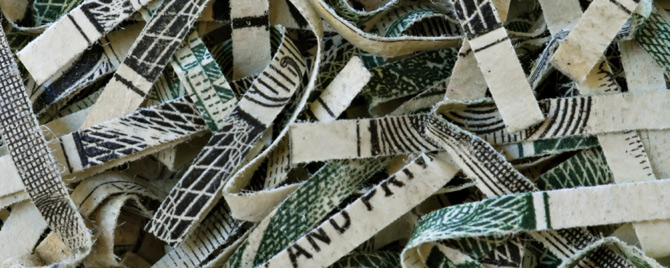The Federal Reserve System is doing more to limit the environmental impact of currency.
In 2014, Reserve Bank Cash Services produced 6,166 tons of shredded currency residue across its 28 operations and recycled 89 percent (5,467 tons) using various alternatives to landfills.
That’s a significant change given how the Fed used to get rid of old money, as the Wall Street Journal reported recently.
Old bills were burned for the most part, or dumped in landfills. Before 2010, only a third of shredded cash was recycled. The big push for more recycling began in 2011, when the Fed began to identify local vendors that would haul away the currency for free.
Now shredded currency across the district – and the country – is recycled for a variety of purposes, including insulation for houses and compost piles that become fertilizer.
In San Francisco, the Bank partners with a green facility where shredded currency is burned in an eco-friendly power-generation plant that provides electricity for local businesses and homes.
You may also want to read:
The views expressed here do not necessarily reflect the views of the management of the Federal Reserve Bank of San Francisco or of the Board of Governors of the Federal Reserve System.
